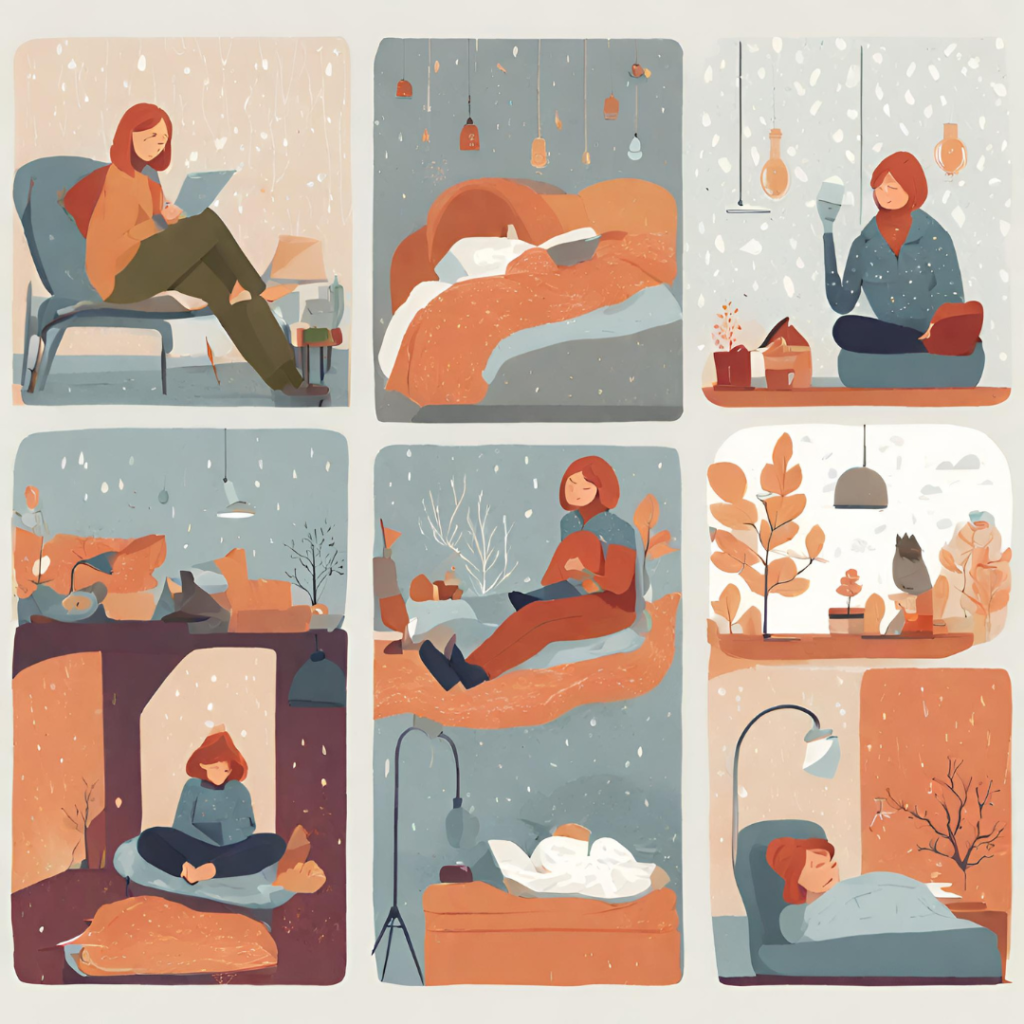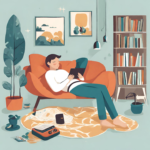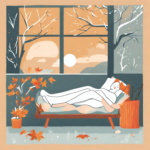As the seasons transition, our daily habits and health undergo significant changes, with one of the most impactful yet often overlooked aspects being our sleep patterns. This exploration into how Seasonal Affective Disorder (SAD) influences nap patterns sheds light on the importance of adapting nap habits to seasonal mood changes, providing valuable insights into how different seasons can impact our need for daytime rest.
Understanding Seasonal Affective Disorder and Its Impact on Sleep
Seasonal Affective Disorder is a type of depression linked to seasonal shifts, typically beginning in late fall or early winter and subsiding during spring or summer. Symptoms such as mood swings, fatigue, depression, and changes in sleep patterns are central to understanding SAD’s influence on sleep and napping. These symptoms are especially relevant when considering the quality and quantity of daytime napping, highlighting the need for seasonal variation in sleep: strategies and solutions.
The Link Between SAD, Sleep, and Seasonal Changes
The transition to shorter days in fall and winter can disrupt our internal clock or circadian rhythm, leading to significant seasonal shifts and their impact on daytime rest. This alteration often results in changes in sleep patterns, including increased fatigue and a heightened need for naps. Conversely, the longer days of spring and summer typically lead to a decreased need for naps, emphasizing the role of seasons in shaping sleep patterns.
Navigating Winter Napping and Summer Challenges
- Winter Napping: The limited sunlight in winter increases melatonin production, often leading to drowsiness and an amplified inclination for napping. This is a key consideration in coping with Seasonal Affective Disorder in sleep cycles.
- Summer Napping Challenges: During summer, longer daylight hours suppress melatonin production, making it more challenging to nap even when fatigued. This necessitates balancing sleep health with seasonal transitions.
- REM Sleep and SAD: SAD can disrupt REM (rapid eye movement) sleep, essential for emotional regulation and memory, potentially leading to an increased need for naps. Understanding this connection is crucial in harmonizing napping routines with seasonal changes.

Adapting Nap Habits for Seasonal Wellness
- For Winter Napping: Opt for short, 20-30 minute naps to avoid disrupting nighttime sleep. Embrace strategies like seeking natural light exposure during the day to help regulate sleep patterns and create a warm, comfortable napping environment during the colder months.
- For Summer Napping: Focus on ensuring a cool, dark environment for easier daytime sleep. Avoiding late afternoon naps helps maintain a healthy sleep cycle. If napping proves difficult, practice relaxation techniques such as meditation, an integral part of seasonal affective disorder: adjusting sleep strategies.
Managing SAD for Improved Sleep: Seasonal Strategies
Managing Seasonal Affective Disorder effectively is crucial for enhancing sleep quality during different times of the year. Utilizing light therapy, mimicking natural outdoor light, is a significant strategy in adapting nap habits to seasonal mood changes. Regular exercise boosts serotonin levels, improving mood and sleep – a vital aspect of coping with Seasonal Affective Disorder in sleep cycles. Additionally, a balanced diet rich in nutrients combats SAD-related fatigue, aligning with seasonal variation in sleep: strategies and solutions.
Vitamin D’s Role in Seasonal Sleep Health
The reduced sunlight in autumn and winter can lead to Vitamin D deficiency, which is linked to increased sleep disturbances and daytime sleepiness. Supplementing Vitamin D or incorporating Vitamin D-rich foods into the diet can help address these sleep issues, emphasizing the role of seasons in shaping sleep patterns.
Psychological and Cultural Influences on Seasonal Sleep Patterns
The psychological impact of seasonal changes, such as winter-induced lethargy or summer-induced energy, significantly influences the desire and ability to nap. Cultural practices like the siesta in Mediterranean countries illustrate how societal norms and seasonality shape nap habits, a key element in balancing sleep health with seasonal transitions.
Maintaining Seasonal Sleep Hygiene for Better Rest
Good sleep hygiene is crucial regardless of the season. Maintaining a consistent sleep schedule and optimizing the sleep environment in terms of temperature, light, and noise are essential strategies in harmonizing napping routines with seasonal changes.
Dietary Impact on Seasonal Sleep Rhythms
Seasonal dietary changes can affect sleep patterns. For instance, a carbohydrate-rich winter diet may induce a sense of calm and increase the propensity for napping, while a lighter summer diet might promote better nighttime sleep, reducing the need for daytime naps – a reflection of navigating seasonal changes in sleep rhythms.
Engaging in Outdoor Activities for Sleep Regulation
Participating in outdoor activities, even on cloudy days, helps regulate circadian rhythms and improve mood, which can positively impact sleep patterns. This is an important factor in seasonal sleep pattern adjustments, especially for children and adolescents whose sleep patterns, including their napping habits, are subject to seasonal influences.
Awareness of Sleep Phase Disorders During Seasonal Transitions
Understanding and managing sleep phase disorders, such as advanced sleep phase disorder (ASPD) and delayed sleep phase disorder (DSPD), is crucial, especially during seasonal transitions. This awareness is part of the broader approach of Seasonal Affective Disorder: adjusting sleep strategies.

Enhancing Sleep Quality Across Diverse Seasons
Developing a consistent wind-down routine is vital for improving sleep quality, particularly during seasonal shifts affecting our circadian rhythms. Activities like reading, taking a warm bath, or relaxation exercises can signal to your body that it’s time to wind down for the night, a practice integral to seasonal sleep pattern adjustments.
Weather and Temperature: Their Role in Seasonal Sleep
Temperature and weather significantly impact sleep quality. Managing temperature fluctuations with appropriate bedding and room temperature control, and mitigating weather-induced discomfort with tools like white noise machines or earplugs, are essential for maintaining sleep health across seasons.
Napping as a Tool for Seasonal Sleep Balance
Napping can be an effective tool to balance sleep deficits, particularly during seasons when SAD symptoms are more pronounced. Short power naps of around 20 to 30 minutes can rejuvenate the mind and body, enhancing alertness and performance – a core aspect of adapting nap habits to seasonal mood changes.
Embracing Seasonal Lifestyle Changes for Better Sleep
Embracing seasonal activities, like snow sports in winter or swimming in summer, helps align your body’s rhythm with the season. Maintaining a healthy social life, irrespective of the season, can also have positive effects on mood and sleep patterns, essential for navigating seasonal changes in sleep rhythms.
Conclusion: Understanding and Adapting to Seasonal Sleep Needs
By understanding and adapting to the nuances of Seasonal Affective Disorder and its impact on sleep, we can significantly improve our overall well-being. As the seasons shift, so should our approach to achieving restful sleep and maintaining a healthy lifestyle, embodying the essence of seasonal sleep pattern adjustments.


